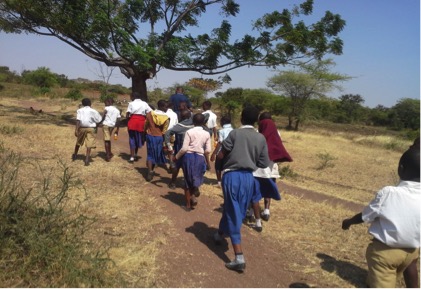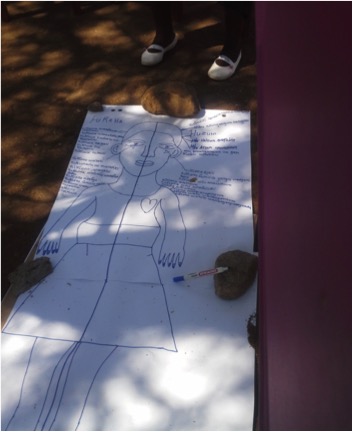Engaging children in community mapping and other participatory methodologies
Firelight’s Resilience Initiative provides funding and capacity building support to grassroots organizations in Tanzania working to ensure children realize the fulfillment of their rights and their potential within a safe, caring, and protective environment. Child participation in community-based initiatives is important, particularly for programs for children. Children provide a unique and critical perspective that can help to ensure programs and activities truly respond to their needs and priorities.
In July and August, our Shinyanga-based grantee-partners in the Resilience Initiative carried out community mapping exercises to help communities identify factors and institutions that support children’s wellbeing and those that currently do not. A deliberate attempt was made to ensure that the views of children were included in this process. Grantee-partners used child-friendly activities that would help children open up and share their views. Descriptions of many of these methodologies are available . The following activities were completed with children:
- Transect walk
Children together with facilitators walked around their community to places where children spend their time. At each place, children were asked about what they thought about the place. Places visited included schools, classrooms, play grounds, churches, wells and boreholes. Noteable were the long distances that children walked from home to school each day. Children expressed that they were not happy about this because by the time they got to school they were hungry and tired. In the classroom, children also shared how they were not happy about corporal punishment.

- Happiness assessment
Older children in secondary schools drew a capital H and discussed issues that made them happy in the community, what made them sad, and their recommendations for changing the situation.
In most of the discussions, the children described being happy to be in school as this enabled them to interact with their peers. However, at that same environment what made them sad was the issue of corporal punishment from the teachers. Their recommendation was that teachers should find alternative ways of disciplining them.
The older children also highlighted that gender-based violence at home made them very unhappy. They described conflicts over money at home, with fathers sometimes refusing to give mothers money to run the household and instead misusing the family’s resources. This directly impacts their wellbeing as at times they lack basic necessities such as adequate food and books for school. Some of the children recommended that their mothers should start income-generating projects so that they earn their own money that they could use to meet the family needs. Other children from communities that had skillful parenting programs, recommended that all families be part of the skillful parenting programs so that they are taught about good family relations, communication, and budgeting.
- Body mapping
This activity proved very popular with the younger children in primary schools. Children drew a picture of a person and divided this into two. On one side, they wrote about the various negative things they saw, experienced, and heard in their community, also describing how these things made them feel. On the opposite side they wrote about the positive experiences and interactions in their lives. This visual exercise helped children open up and share in a fun way. Some of the things that made them happy were: seeing children going to school, being praised by their teachers, and having enough to eat. They heard of sexual abuse in the community and had seen some children who have been abused sexually and this made them very sad. Having friends to play with made them very happy. However, being called names because of their status such as being labeled an orphan by teachers or other children made them very sad.

Overall, grantee-partners found that the child-friendly activities were useful in getting children to open up and share their views. Engaging children through these methodologies helped grantee-partners to better understand children’s experiences in their communities. This understanding has informed grantee-partners’ and communities’ actions to improve child protection and child rights in their communities. The grantee-partners plan to conduct regular community mapping exercises in the same communities, and gather children’s and adults’ perspectives on the progress made in improving child wellbeing in their community.

